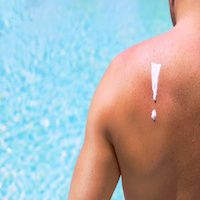Starting Indoor Tanning Early Linked to Melanoma Diagnoses in Younger Women
Younger women (below age 40) who are diagnosed with melanoma frequently report that they began indoor tanning at an earlier age.

Younger women (below age 40) who are diagnosed with melanoma frequently report that they began indoor tanning at an earlier age.
Melanoma patients below 40 years of age were also found to undergo indoor tanning more frequently than older women with melanoma.
To analyze the relationship between melanoma diagnosis and indoor tanning, the age when indoor tanning began, and the frequency of indoor tanning for men and women depending on age of melanoma diagnosis, DeAnn Lazovich,PhD, University of Minnesota, and colleagues conducted a study that included 681 patients who were diagnosed with melanoma between 2004 and 2007 and 654 control patients between the ages of 25 and 49.
According to the study, women below age 40 reported beginning indoor tanning at 16, compared to women 40-49 who only started at 25. Additionally, the younger group reported more frequent tanning of 100 sessions compared t the 40 sessions of the older women.
The study results indicated women who practiced indoor tanning were two to six times more likely to develop melanoma.
The researchers found approximately 33% of the women diagnosed prior to 30 years of age had melanomas on their trunk compared to 24% of women who were between 40-49 years.
While men were less likely to report indoor tanning use compared to women, 41% men of the 30-39 age group were diagnosed with melanoma on their trunk compared with 49% of men between 40-49 years.
The study authors concluded, “Our results indicate that these efforts need to be accelerated and expanded beyond bans on minor access to indoor tanning to curb the melanoma epidemic, which seems to continue unabated especially among young women, unless exposure to indoor tanning is further restricted and reduced.”
What to Read Next >>> Teens Who Use Indoor Tanning Are at Higher Risk for Substance Abuse